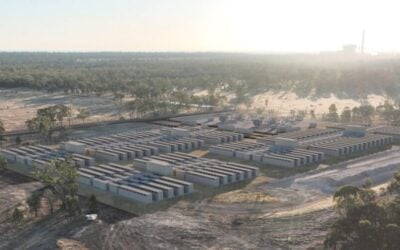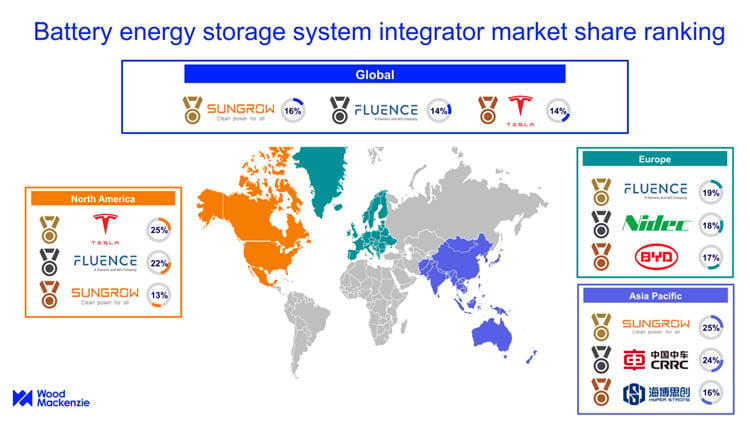Report on Energy Poverty, Justice, and the Sustainable Development Goals in Latin America
1.0 Introduction: The Challenge of a Just Energy Transition
A critical analysis, prompted by the publication “Energy Poverty, Justice and Gender in Latin America,” questions the feasibility of a “just” energy transition in a region where millions lack basic energy services. The report examines the deep-seated energy inequalities in Latin America, highlighting the disconnect between current policies and the foundational principles of the Sustainable Development Goals (SDGs). It argues that achieving a just transition requires a fundamental rethinking of the region’s role in global energy debates, with a focus on social equity and sovereignty.
The analysis is structured around three core themes:
- The multidimensional nature of energy poverty.
- Contradictions in the distribution of burdens and benefits, central to energy justice.
- The intersection of energy poverty, justice, and gender inequality, a frequently overlooked reality.
2.0 The State of Energy Access: A Failure to Meet SDG 7
Official statistics from the International Energy Agency suggest that 97% of the population in Latin America and the Caribbean has access to electricity. However, this figure masks a severe deficit in achieving the targets of SDG 7 (Affordable and Clean Energy).
2.1 Gaps in Universal Access
- Electricity Deficit: Approximately 17 million people, predominantly in rural and indigenous communities, remain without electricity access. For those connected, service is often unreliable and precarious.
- Clean Cooking Deficit: An estimated 75 million people still rely on biomass for cooking. This dependency is particularly high in countries like Haiti (95%), Honduras (50%), Guatemala (50%), Mexico (15%), Peru (15%), and Bolivia (12%), directly contravening the goal of universal access to clean cooking technologies under SDG 7.
2.2 The Affordability Barrier and its Link to SDG 1
Energy poverty is intrinsically linked to economic hardship, undermining SDG 1 (No Poverty). For the poorest households in nations such as Bolivia and Peru, electricity costs can consume up to 20% of their monthly income. This prohibitive cost acts as a structural barrier, preventing vulnerable communities from accessing modern and reliable energy, thereby perpetuating cycles of poverty.
3.0 Multidimensional Impacts on Health, Gender, and Equality
Energy poverty is not merely an infrastructural problem but a reflection of structural inequalities that have profound impacts on health, gender equality, and social equity, affecting multiple SDGs.
3.1 Health Consequences and SDG 3
The widespread use of biomass for cooking has severe health repercussions, directly impacting SDG 3 (Good Health and Well-being). Prolonged exposure to toxic indoor fumes is estimated to cause 38,000 premature deaths annually in the region. This health crisis disproportionately affects women and children, who spend more time in domestic environments.
3.2 Gender Disparities and SDG 5
Energy poverty exacerbates existing gender inequalities, creating significant obstacles to achieving SDG 5 (Gender Equality). Women in rural settings bear the heaviest burden:
- They dedicate significant time to collecting firewood.
- They suffer the most from indoor air pollution.
- They face increased risks of violence in areas lacking adequate public lighting.
When energy is scarce, gender inequalities are deepened, limiting women’s economic and political participation.
4.0 Critiquing the Dominant Energy Transition Model
The prevailing discourse on energy transition in Latin America is heavily influenced by Global North agendas and corporate interests. This approach promotes renewable energy expansion without adequately addressing equitable benefit distribution, thereby threatening the principles of a “just transition” as envisioned in SDG 13 (Climate Action) and SDG 10 (Reduced Inequalities).
- Community Conflict: Large-scale wind projects in Brazil and Mexico have created tensions with local communities.
- Resource Extraction: The exploitation of lithium in Argentina, Chile, and Bolivia is driven more by international market demand than by a regional strategy for inclusive development, failing to advance SDG 8 (Decent Work and Economic Growth) for local populations.
Without a vision for autonomous development, the green transition risks perpetuating technological and economic dependency, further entrenching the inequalities targeted by SDG 10.
5.0 A Framework for a Just Transition Aligned with the SDGs
A truly just transition requires a new energy agenda for Latin America that challenges existing power structures and prioritizes regional needs. This involves rethinking governance to align with SDG 16 (Peace, Justice and Strong Institutions) by ensuring community participation in energy planning and exploring decentralized models like energy cooperatives.
To reverse current trends, the energy transition must be integrated with an active industrial policy that promotes:
- Local production of renewable technologies.
- Strengthening of national capacities.
- Generation of qualified employment, directly supporting SDG 8 (Decent Work and Economic Growth).
6.0 Conclusion: Addressing Structural Challenges for an Equitable Future
The report concludes that the energy transition is fundamentally a political process. Achieving a just, democratic, and equitable transition requires addressing several structural dimensions through the lens of the Sustainable Development Goals:
- The Urban-Rural Dichotomy: The exclusion of rural and indigenous communities from modern energy services perpetuates inequality, hindering progress on SDG 10 and SDG 11 (Sustainable Cities and Communities).
- Health Impacts of Biomass: The continued reliance on polluting fuels is a critical failure in public health and clean energy policy, directly opposing SDG 3 and SDG 7.
- Prohibitive Energy Costs: High costs for vulnerable populations undermine energy as a human right and are a major barrier to achieving SDG 1 and SDG 7.
- Systemic Gender Gaps: Persistent gender inequalities in the energy sector obstruct social justice and the realization of SDG 5.
Ultimately, a just transition for Latin America is only possible if it is built upon the principles of social justice, energy sovereignty, and a comprehensive commitment to the Sustainable Development Goals.
1. SDGs Addressed in the Article
- SDG 1: No Poverty: The article directly links energy poverty to broader structural inequalities and poverty, highlighting how high energy costs (up to 20% of monthly income for the poorest households) create a significant financial burden.
- SDG 3: Good Health and Well-being: The text discusses the severe health consequences of using biomass for cooking, citing an estimated 38,000 premature deaths annually in the region due to exposure to toxic fumes.
- SDG 5: Gender Equality: The article emphasizes that energy poverty disproportionately affects women, who spend hours collecting firewood, suffer from indoor air pollution, and face increased risks of violence in areas without proper lighting.
- SDG 7: Affordable and Clean Energy: This is the central theme of the article, which analyzes the lack of universal access to electricity and clean cooking technologies in Latin America.
- SDG 8: Decent Work and Economic Growth: The article advocates for an energy transition linked to an active industrial policy that promotes local technology production and the creation of skilled jobs.
- SDG 10: Reduced Inequalities: The text focuses on energy-related inequalities, particularly the urban-rural divide and the exclusion of indigenous communities from modern energy services.
- SDG 13: Climate Action: The article discusses the “energy transition” and “green transition,” which are fundamental to climate action, while critiquing the current approach for not being inclusive or just.
- SDG 16: Peace, Justice, and Strong Institutions: The article calls for rethinking the governance of the energy sector to ensure community participation in planning and to establish energy as a human right, promoting energy justice.
2. Specific Targets Identified
-
SDG 3: Good Health and Well-being
- Target 3.9: By 2030, substantially reduce the number of deaths and illnesses from hazardous chemicals and air, water and soil pollution and contamination. The article connects the lack of clean cooking technology to premature deaths from indoor air pollution.
-
SDG 5: Gender Equality
- Target 5.4: Recognize and value unpaid care and domestic work. The article points out that rural women “dedican horas a recolectar leña” (dedicate hours to collecting firewood), a form of unpaid domestic labor exacerbated by energy poverty.
-
SDG 7: Affordable and Clean Energy
- Target 7.1: By 2030, ensure universal access to affordable, reliable and modern energy services. The article explicitly states that 17 million people in the region lack access to electricity and 75 million still cook with biomass.
- Target 7.2: By 2030, increase substantially the share of renewable energy in the global energy mix. The article discusses the promotion and “expansión de las energías renovables” but critiques the implementation for not benefiting local communities.
-
SDG 8: Decent Work and Economic Growth
- Target 8.2: Achieve higher levels of economic productivity through diversification, technological upgrading and innovation. The article calls for a policy that “promueva la producción local de tecnologías, el fortalecimiento de las capacidades nacionales y la generación de empleo calificado.”
-
SDG 10: Reduced Inequalities
- Target 10.2: By 2030, empower and promote the social, economic and political inclusion of all. The article highlights the exclusion of rural areas and indigenous communities (“muchas zonas rurales y comunidades indígenas siguen excluidas del acceso a servicios energéticos modernos”).
3. Indicators Mentioned or Implied
-
For Target 7.1
- Indicator 7.1.1 (Proportion of population with access to electricity): The article provides data, stating that while 97% of the population in Latin America and the Caribbean has access, “Casi 17 millones de personas de la región, la mayoría en zonas rurales y comunidades indígenas, siguen sin tener acceso a la electricidad.”
- Indicator 7.1.2 (Proportion of population with primary reliance on clean fuels and technology): The article specifies that “unos 75 millones de personas todavía cocinan con biomasa” and provides country-specific percentages for populations without access to clean cooking: Haiti (95%), Honduras (50%), Guatemala (50%), Mexico (15%), Peru (15%), and Bolivia (12%).
-
For Target 3.9
- Indicator 3.9.1 (Mortality rate attributed to household and ambient air pollution): The article provides a specific figure, stating that exposure to toxic fumes from biomass “provoca alrededor de 38.000 muertes prematuras al año en la región.”
-
Implied Indicator for Energy Affordability (Relevant to SDG 1 and SDG 7)
- Proportion of household income spent on energy: The article implies this indicator by stating that for the poorest households in Bolivia and Peru, “el costo de la electricidad… puede representar hasta el 20% de sus ingresos mensuales.”
-
Implied Indicator for Gender Inequality (Relevant to SDG 5)
- Time spent on unpaid domestic chores: The article implies this by noting that women “dedican horas a recolectar leña,” which is a measurable indicator of the gendered impact of energy poverty.
4. Summary Table of SDGs, Targets, and Indicators
| SDGs | Targets | Indicators Identified in the Article |
|---|---|---|
| SDG 7: Affordable and Clean Energy | 7.1: Ensure universal access to affordable, reliable and modern energy services. | 7.1.1: 17 million people lack access to electricity. 7.1.2: 75 million people cook with biomass; specific percentages provided for countries like Haiti (95%) and Honduras (50%). |
| SDG 3: Good Health and Well-being | 3.9: Substantially reduce deaths and illnesses from pollution and contamination. | 3.9.1: 38,000 premature deaths per year from exposure to toxic fumes from cooking. |
| SDG 5: Gender Equality | 5.4: Recognize and value unpaid care and domestic work. | Implied Indicator: Time women spend collecting firewood (“dedican horas a recolectar leña”). |
| SDG 10: Reduced Inequalities | 10.2: Promote the social, economic, and political inclusion of all. | Exclusion of rural and indigenous communities from modern energy services. |
| SDG 1: No Poverty | (Related to Target 1.4 on access to basic services) | Implied Indicator: High energy cost burden, with electricity representing up to 20% of income for the poorest households. |
| SDG 8: Decent Work and Economic Growth | 8.2: Achieve higher levels of economic productivity and technological upgrading. | Call for policies that promote local technology production and skilled job creation. |
Source: dialogue.earth







